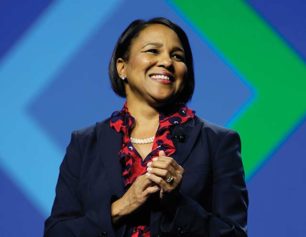
A Los Angeles Times analysis of data from the university found that the “six-year graduation rate in 2015 for students who started and finished at UC-Riverside was 73 percent for Blacks, 71 percent for whites, 69 percent for Latinos and 77 percent for Asian-Americans.”
While some California universities graduate even more Black students, UC-Riverside came in first in the state and sixth nationally in steadily improving graduation rates for Black students. UC-Riverside stands out for averaging a 69.5-percent Black graduation rate from 2012 to 2014. In contrast, universities with a similar makeup of students, including the University of Illinois at Chicago, University of North Carolina and Virginia Commonwealth University, averaged a Black graduation rate of just 48.4 percent.
So, what’s responsible for UC-Riverside’s success with African-American students? Officials at the university say generous financial aid plans, mentoring programs, early intervention when students’ grades start to drop, leadership opportunities on campus and efforts to diversify the faculty have helped.
“This is not magic,” Chancellor Kim Wilcox told the Times. “This is about a deeper ethos of respecting people of all stripes and giving everybody who has the interest, aptitude and energy the opportunity to come and study and learn.”
Black students make up just 6 percent of UC-Riverside students (about the same percentage of African-Americans in the state), but since stepping into his role in 2013, Wilcox has recruited 15 Black faculty members and urged them to mentor Black students. Two more Black faculty members are expected to join the university in the fall.
UC-Riverside student Angel Robinson said that when her grades dropped during her freshman year, the school’s 45-year-old African Student Programs Office connected her to students and staff to mentor, tutor and encourage her. The university even helped her through the death of a close friend.
“Even though we have our fun, grades and education are super important and we all push each other to make it,” Robinson told the Times.
Kenneth Simons said that the university challenges students to excel, even when students question their abilities. UC-Riverside has even supported Black students who protest against racism, such as a group of undergrads who took a stand against racist incidents at the University of Missouri in 2015.
But overlooked in the discussion about Black student success at UC-Riverside is the community itself. Riverside isn’t a remote, all-white college town but a diverse city filled with African-Americans who moved to the area in hopes of a better life.
As long ago as 1988, psychologist Howard Ehrlich told The New York Times that students attending large universities in isolated college towns (read: no Black people) are more likely to experience racism.
Specifically, he told the paper of record that in towns “where the college is the center of the community and the main employer, the colleges do more than reflect society but may magnify the pathologies of the society.”
In Riverside, Blacks do not have this experience. Even Robinson, the student who praised the university for intervening when her grades slipped, said that she felt more comfortable there than in her native Berkeley, Calif., despite the fact that the Bay Area city has long been known as a hippie haven with progressive politics.
The white college town problem isn’t just a U.S. phenomenon, however. In 2010, Canadian publication McClean’s questioned whether such towns are “havens for hate.” That’s because our neighbor to the North reported the most hate crimes in three college towns, all located in the province of Ontario.
Clearly, a university can’t do much to change the demographics of the city in which it is located. But Black students would do well to consider the makeup of a college’s community before enrolling there. On the other hand, colleges would do well to emulate some of UC-Riverside’s initiatives. Intervene early when students began to struggle academically and hire diverse faculty members with the understanding that diversity is a win for everyone.
Professors of color not only bring unique insights to academic institutions, but they also improve the chances that Black students of color will graduate. Most importantly, UC-Riverside has distinguished itself from other universities with its financial aid packages. Helping Black students pay for college can relieve them of financial stress, allowing them to focus on their top priority at school —completing their education.


